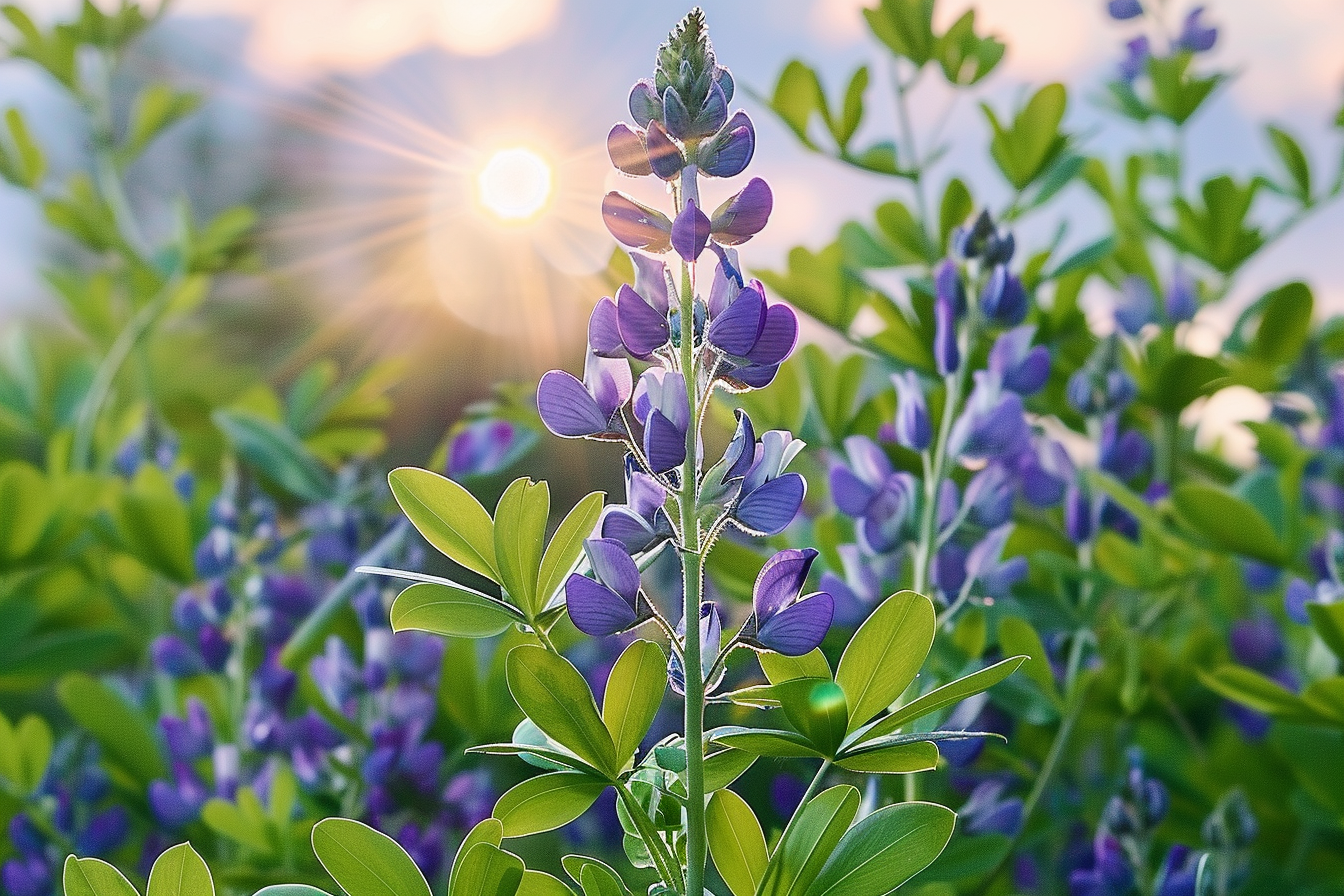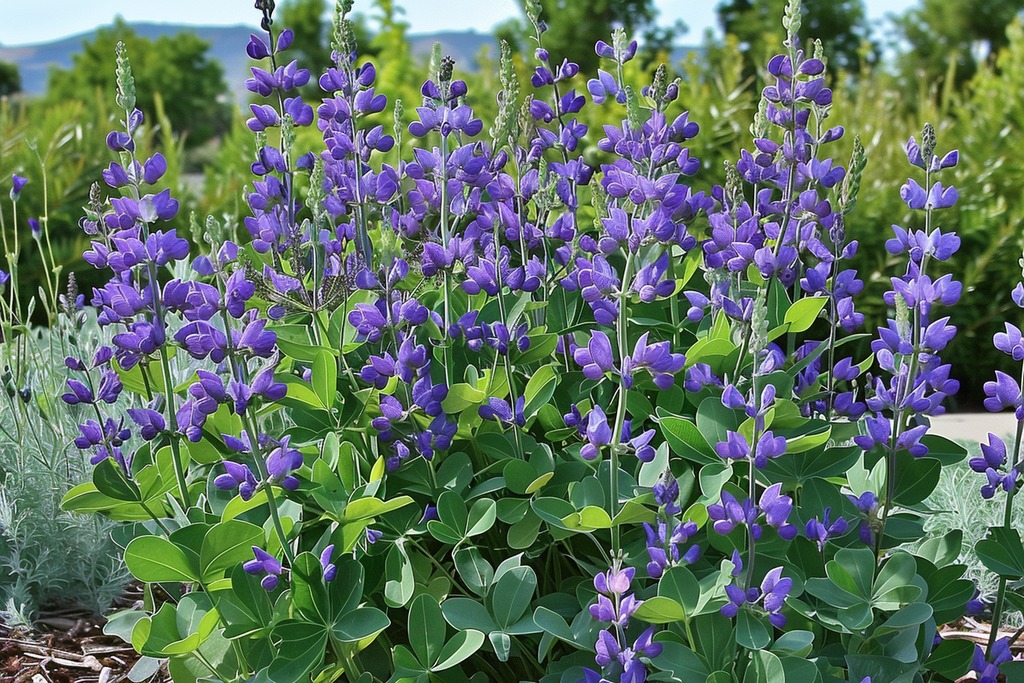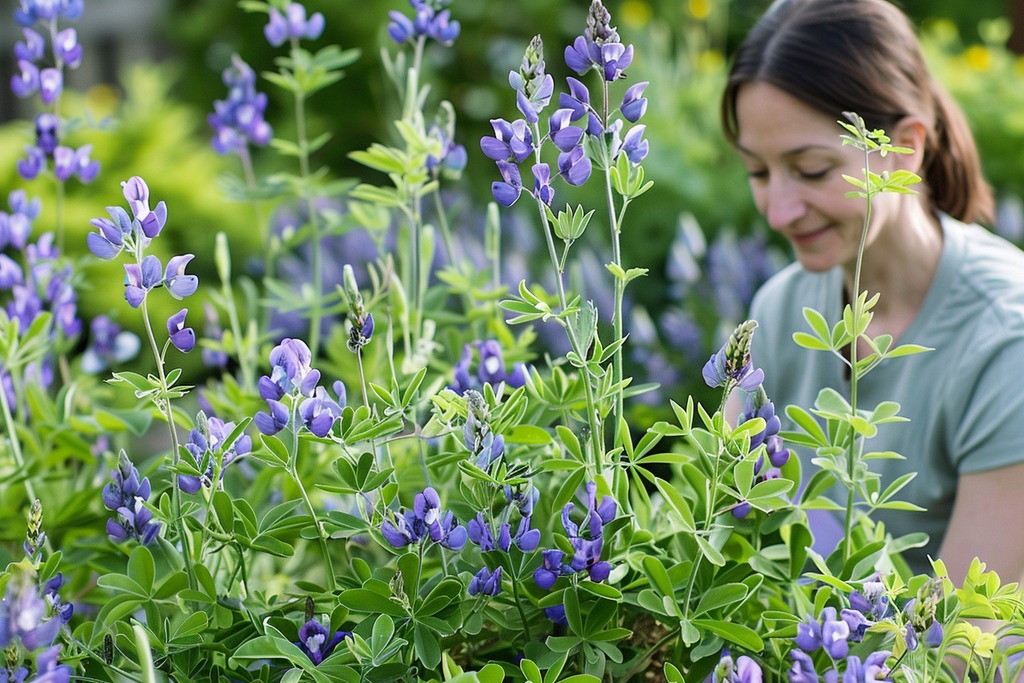Blue False Indigo, scientifically known as Baptisia australis, often flies under the radar in discussions about native plants in Coastal North Carolina. This rugged perennial isn’t just a treat for the eyes with its deep blue blossoms; it’s also rich in history and brimming with benefits. Ready to get the lowdown on this fabulous flora? Let’s explore its historical significance, the advantages it offers, and the nitty-gritty on how to nurture it in your garden.
A Deep Dive into the History of Blue False Indigo
The journey of Blue False Indigo starts long before it became a staple in American gardens. Native to the United States, this plant was a crucial dye source for Native Americans long before the European settlers arrived. The roots of the plant were used to produce a rich, blue dye, similar to that of true indigo (Indigofera tinctoria), which was an expensive import at the time. During the Revolutionary War, its use became even more widespread as an alternative to the increasingly unavailable foreign indigo.
Why Blue False Indigo Deserves a Spot in Your Garden
Ecological Benefits
Blue False Indigo plays a critical role in local ecosystems as a pollinator-friendly plant. It serves as an excellent source of nectar during its flowering period in spring and early summer, attracting bees, butterflies, and other pollinating insects. Beyond its role in supporting wildlife, it also contributes to soil health. As a member of the legume family, it has the ability to fix nitrogen in the soil, which helps to improve soil quality and reduce the need for chemical fertilizers.
Aesthetic Appeal
The aesthetic appeal of Blue False Indigo is undeniable. Its spikes of pea-like blue flowers bloom profusely from late spring to early summer, providing a striking visual interest in any garden setting. After the blooms fade, the plant produces interesting seed pods that add textural and visual interest throughout the fall and winter months, ensuring that the plant remains a focal point in the landscape year-round.
Low Maintenance
One of the greatest advantages of incorporating Blue False Indigo into your garden is its low-maintenance nature. Once established, this plant is incredibly drought-resistant, thriving with minimal care. This resilience makes it an ideal choice for gardeners who prefer plants that require less attention but still want to maintain a vibrant and healthy garden.
How to Grow and Care for Blue False Indigo
Growing Blue False Indigo is straightforward, making it accessible even to novice gardeners. To ensure success, start by choosing a planting spot that receives full sun to partial shade and has well-drained soil, as the plant does not tolerate wet conditions. When planting, space the plants about 2-3 feet apart to accommodate their growth, and plant them slightly deeper than they were in their nursery pots.
Once planted, water the Blue False Indigo regularly until it is well-established. Mature plants are drought-tolerant and do not require frequent watering. Pruning is minimal and generally consists of deadheading the spent flowers to promote more robust growth and prevent the plants from self-seeding too extensively. Additionally, due to its ability to fix nitrogen, fertilization is typically unnecessary, making it an easy plant to care for throughout the growing season.
Wrap-Up
Blue False Indigo is not just another pretty face in the garden. Its historical significance, ecological benefits, and sheer beauty make it a worthwhile addition to any garden, especially those in Coastal North Carolina. Whether you’re a seasoned gardener or a green-thumbed newbie, consider giving this native wonder the spotlight it deserves in your outdoor space.
What do you think about including Blue False Indigo in your garden? Will you give this underappreciated gem a chance to shine? Let’s make our gardens not just places of beauty, but spaces that echo the rich botanical history of our region!






